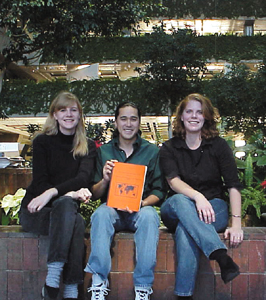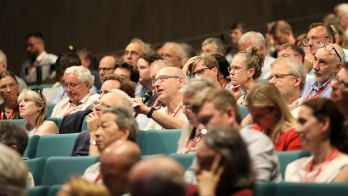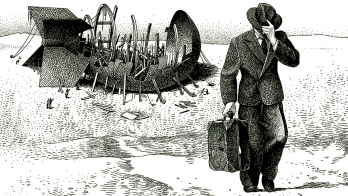A group of young US physicists recently conducted a survey to find out where high-energy physics is heading. The results reveal that growing internationalization makes physicists at isolated centres aim for hands-on access to research elsewhere. The survey also showed a need for more outreach to stimulate and maintain public interest, together with a lamentable lack of job opportunities.
Last year the US particle physics community mounted one of its periodic long-range planning exercises to provide a roadmap for the subject over the coming decade. The recommendations from this study, which was conducted by the High-Energy Physics Advisory Panel (HEPAP) of the US Department of Energy and the National Science Foundation, have been published.

As one conduit to this review, a Young Physicists Panel (YPP) was established by Bonnie Fleming of Columbia, John Krane of Iowa State and Sam Zeller of Northwestern to provide a platform and consensus view for younger researchers. Originally the YPP hoped to provide a brief summary document. However, the survey revealed instead that most respondents did not have a single opinion to convey, making the conclusions more difficult to digest, but at the same time probably more valuable.
A diverse range of questions
To be most useful to HEPAP, the survey, entitled “The future of high-energy physics”, focused on US aspects and needs. Although initially designed for and oriented towards “young” physicists (defined as those yet to achieve a permanent position or tenure), the study was extended to all particle physicists, both inside and outside the US. There were some 1500 replies, most of which were received via the Web.
The survey began with a request for demographic and personal information – current career status, geographical origin, place of work, type of physics done and size of collaboration. The highest profiles to emerge were of a North American working in North America, or a European working in Europe, on collider physics in a team of 500-1000 people. No surprises there.
The next series of questions were aimed at “balance versus focus”, asking what sort of research should be carried out at the next major physics machine to be built, how many detectors it should have and what sort of physicists it should employ.
In this section the emerging picture was of a machine supporting a diverse range of physics, with at least two detectors, employing comparable numbers of theorists, phenomenologists and experimentalists. An extra question showed that it is considered important for high-energy physics laboratories to host an astrophysics effort. Some do, some are in the process of doing so, and other laboratories have yet to satisfy this demand.

A section covering “globalization” lumped together anything to do with big science being concentrated at major centres. Most respondents admitted to seeing their detector at least weekly, so obviously they have easy access and would rather have it this way than be near their supervisor. A hands-on hardware requirement was seen as very important and, if a research centre was situated outside the US, national or regional access via a staging post was considered the best possible alternative to being centrestage.
Answers to specific questions on outreach underlined that particle physics is not doing nearly enough to communicate with either the relevant funding agencies or the general public. Half of the replies indicated that physicists were ready to dedicate more time to this important activity. (It is our opinion at CERN Courier that while this is very commendable, it is one thing to tick a box, but quite another to deliver. Unfortunately, few physicists have the imagination and commitment to contribute significantly to outreach activities.)
Scientific interest
The most revealing part of the survey was perhaps the one that asked participants why they had been attracted to particle physics originally and why they had remained in the field. The answers reveal that intrinsic scientific interest dominated the decision, whether for newcomers or for those further down the line. Science is clearly interesting, at least to some people, and here is a possible message for outreach.
Also very prominent was the opinion that a lack of jobs could drive young people out of the field. Another visible signal indicated that not enough talented physicists are retained. The big question that faces the field now is how to rectify this.
The remaining sections of the YPP survey focused on physics issues, and these were largely mirrored in the HEPAP recommendations. However, it was clear that opinions about the siting of future machines were polarized according to geographical base (North America or Europe). While most tenured US scientists think that it is important to have a major new facility in the US, this view is not mirrored among younger scientists.
With big issues at stake, casting a wider survey net could reveal a more global consensus within the physics community on the way to go forward.







